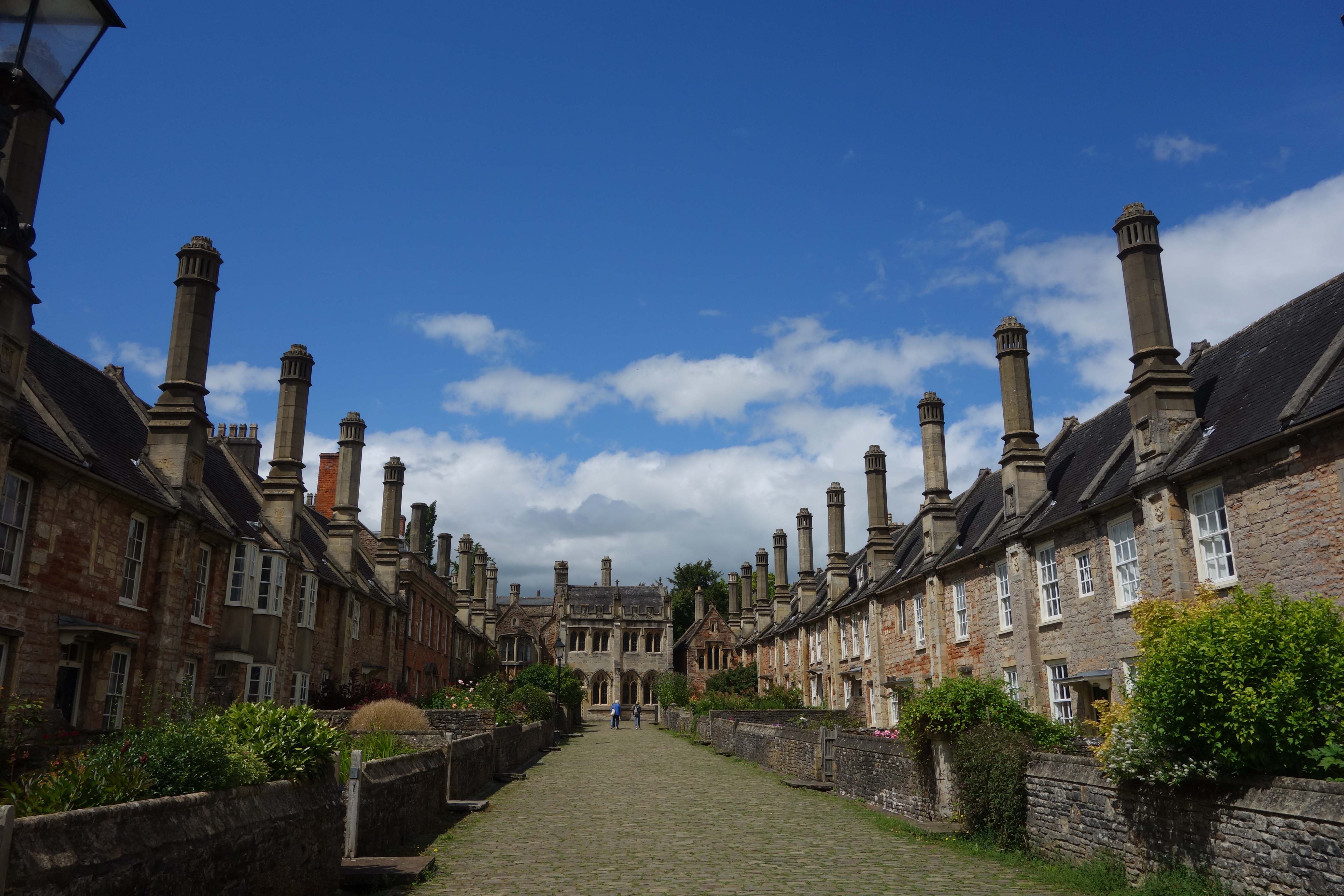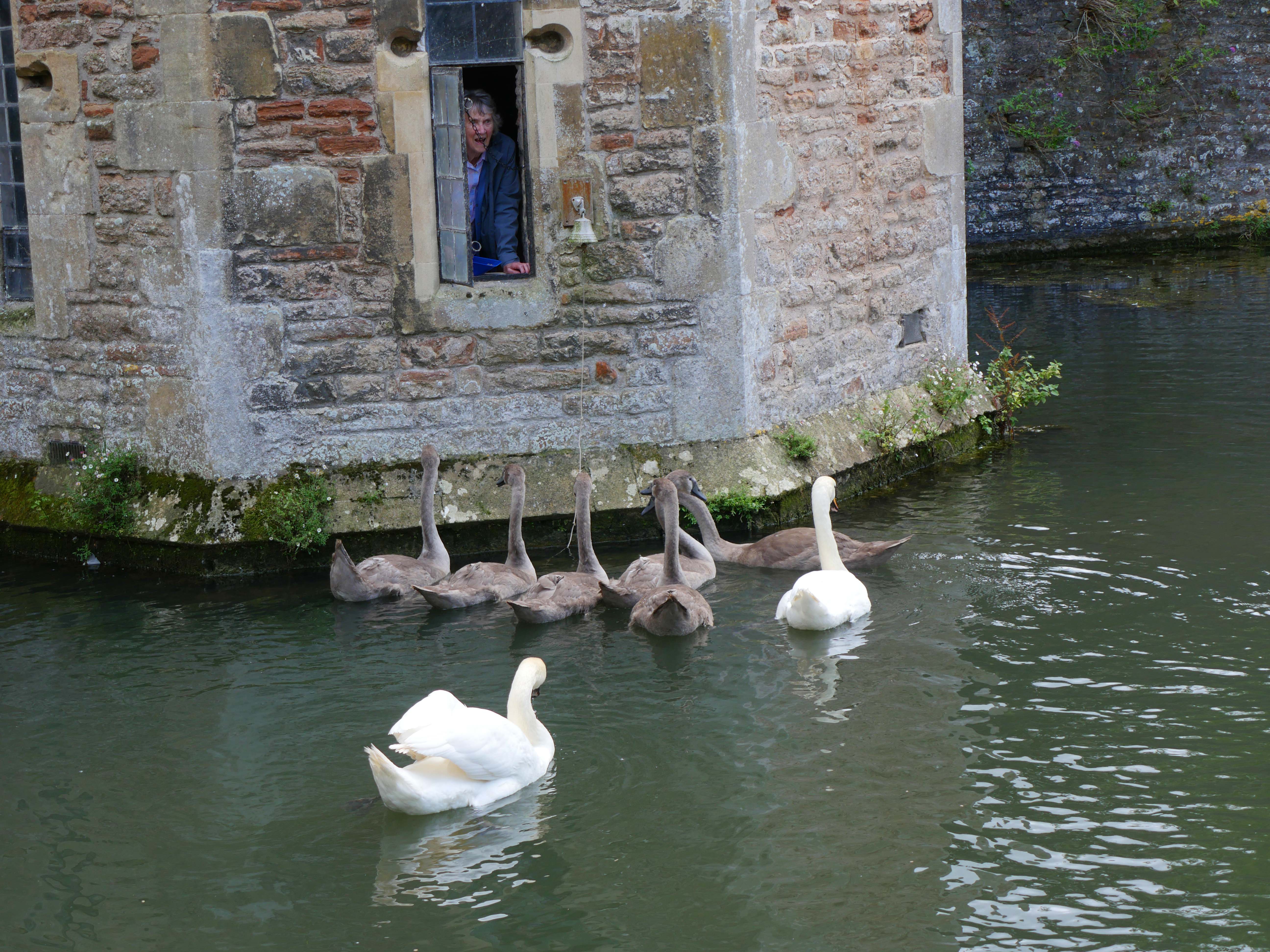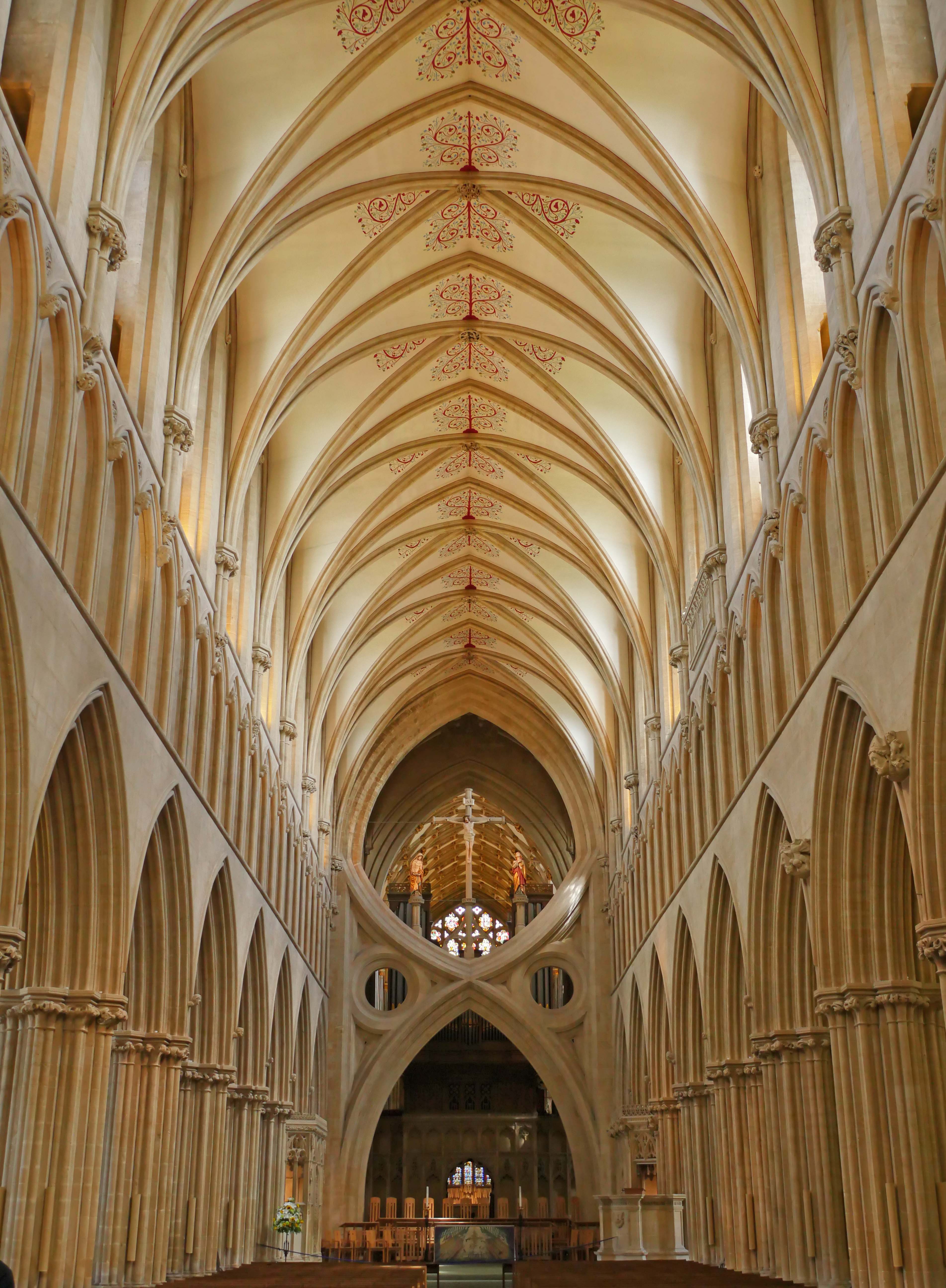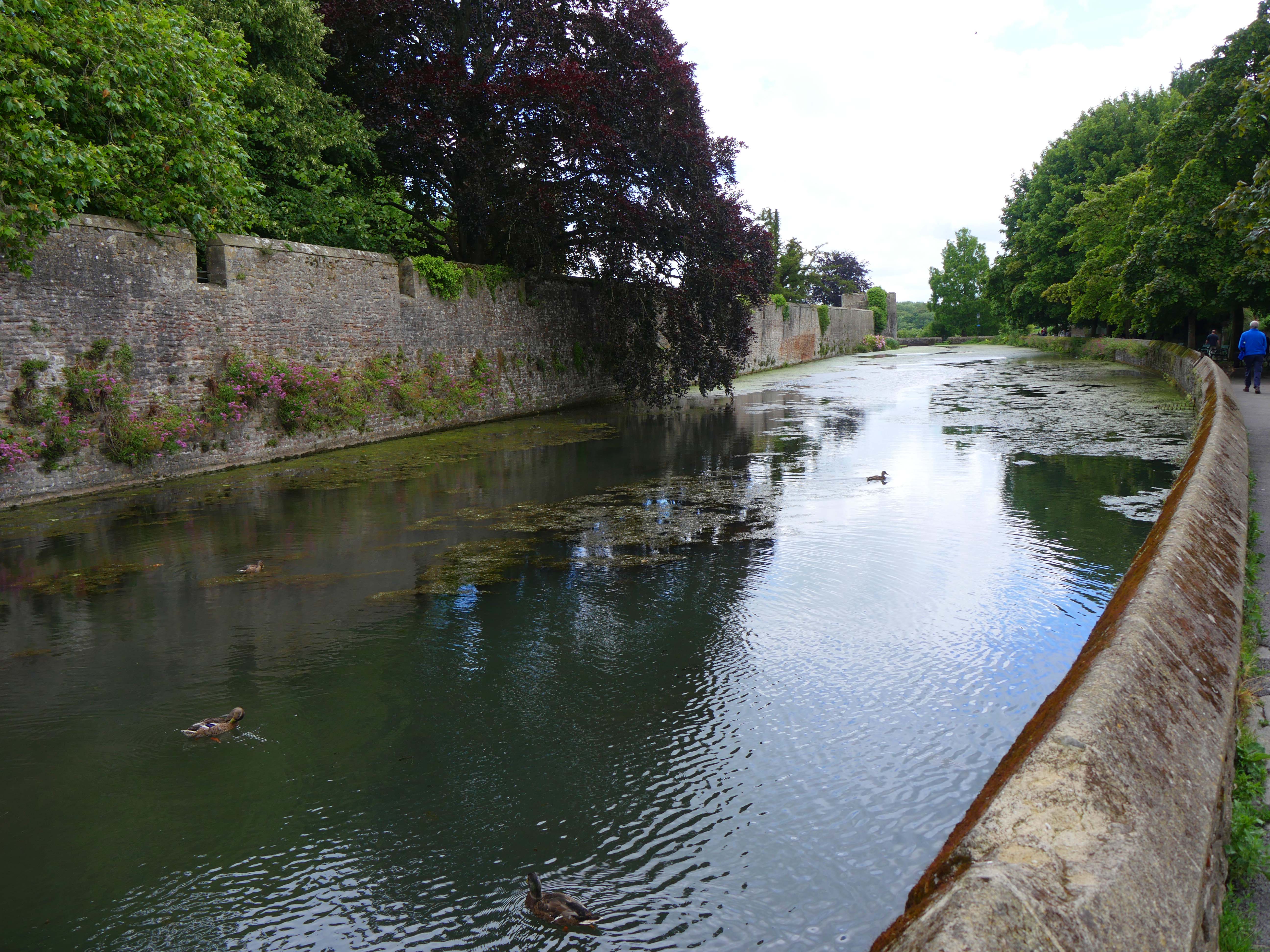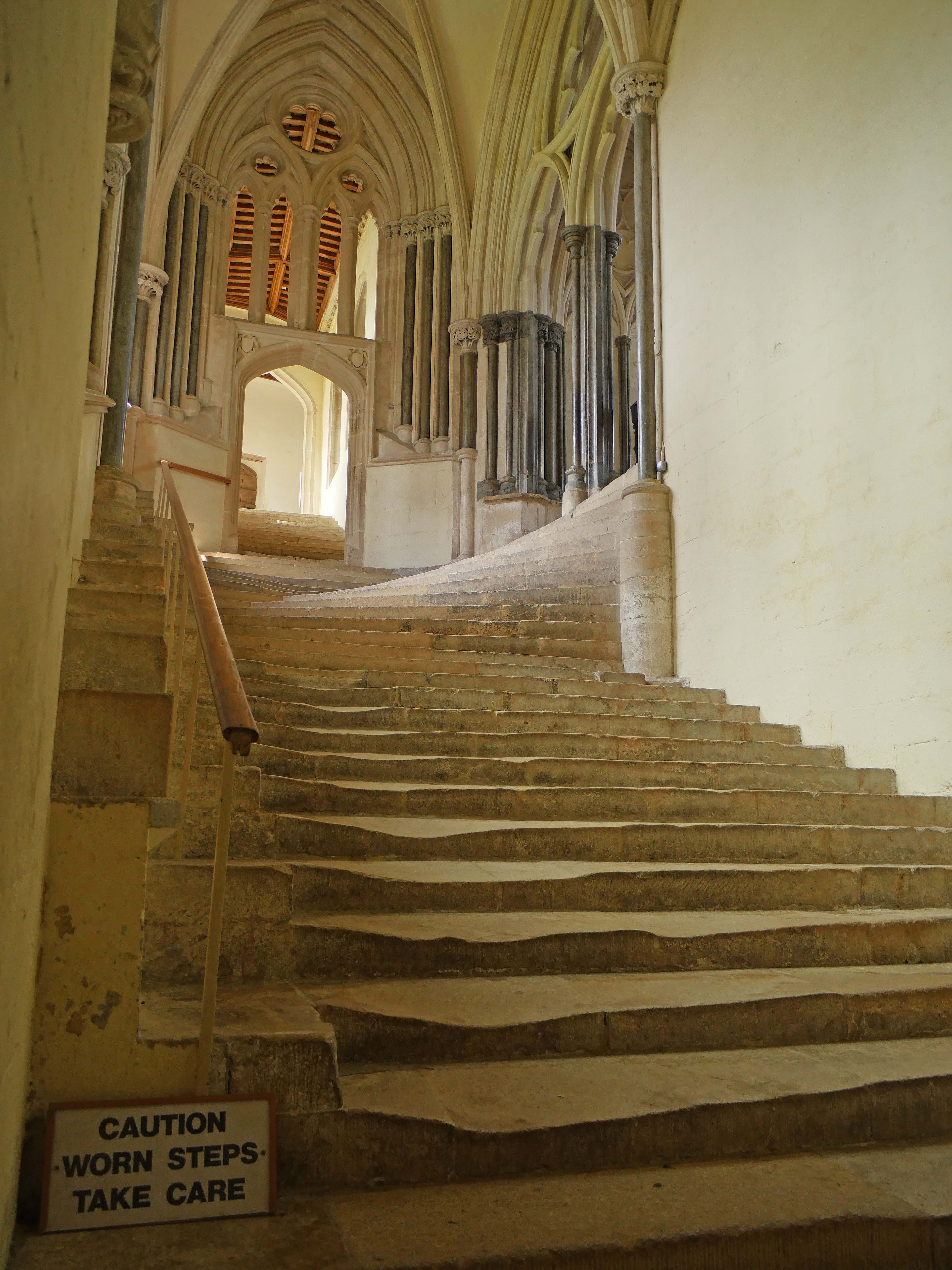The ancient city of Wells in Somerset is small and charming. The wells or springs can still be seen today in the Bishop’s Palace garden and they are the reason for the original settlement of this area. The Palace dates from the early 13th century and is set in 14 acres of RHS partner gardens. It is surrounded by a moat, which is home to a collection of waterfowl, a family of kingfishers an otter and mute swans. It is interesting to watch the cygnets ringing the bell by the drawbridge. In response to the bell, a little window in the gatehouse opens and someone from inside throws swan food out! When visiting the Palace, you enter via the archway from the market square known as the Bishop’s Eye, crossing the drawbridge and into the ramparts. Inside the Palace is the Undercroft and the various rooms where the bishops would have entertained guests. The Long Gallery is filled with art and artefacts. There is also the Chapel and Great Hall. The Coronation Room is where the specially designed copes are displayed. They were worn by the bishops at the different coronations.
The city of Wells is dominated by the beautiful cathedral which began construction around 1175 in the Gothic style. Truly iconic, the building has many unique features. There are almost 300 medieval statues and an unusually large number of surviving medieval stained-glass windows, including the splendid 14th century Jesse Window. The cathedral clock mechanism was made in 1390 and the clock face is the oldest surviving original of its kind anywhere in the world. When the clock strikes, the jousting knights rush arond the clock and the Quarter Jack bangs the quarter hours with his heels! The clock on the outside of the building is connected with the inside mechanism. The octagonal Chapter House has a chained library and the fine ribbed-vaulted ceiling gives the appearance of a palm tree. Humorous and mischievous faces have been carved into the corners. You can enter via the north choir up a remarkable curving staircase.
The oldest continuously occupied medieval street in Europe is Vicar’s Close which is physically connected to the cathedral. It was built over 650 years ago to house the Vicar’s Choral and is still inhabited by their successors. The towering chimney stacks are decorated with heraldic shields.
We visited Wells on Market Day – these are held every Wednesday and Saturday. There was a variety of local produce on sale. There were also lots of independent shops on the High Street which I enjoyed browsing. Mary Rand lived in the city and she achieved a world record long jump in the 1964 Olympic Games.(On the pavement is a commemorative plaque showing the actual distance) On the Cathedral Green is the Wells & Mendip Museum which has a fine collection of local artefacts and you can also learn about cave exploration under the Mendip hills.
The city of Wells and the surrounding countryside is certainly a great place to visit. So beautiful and peaceful.
